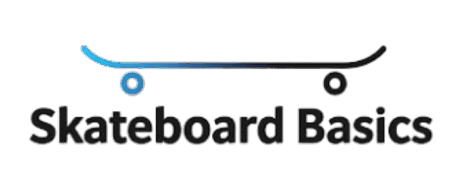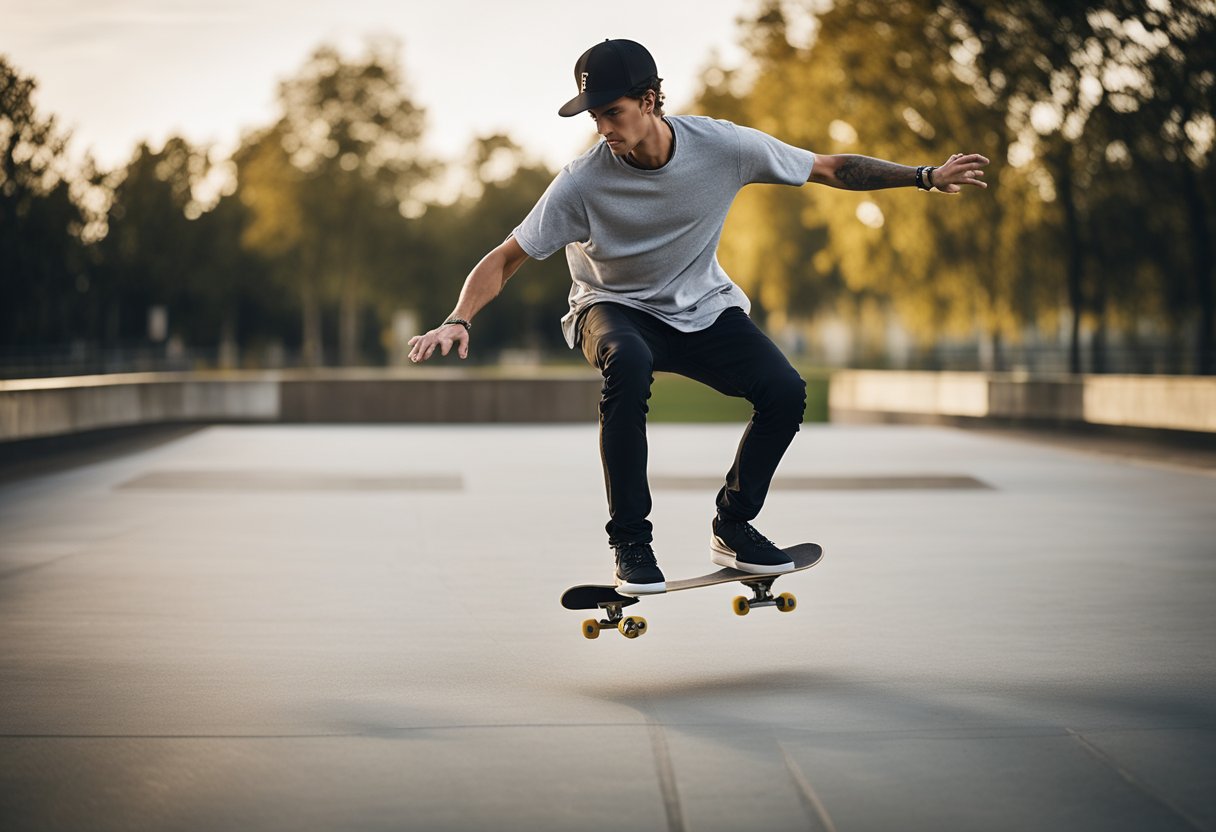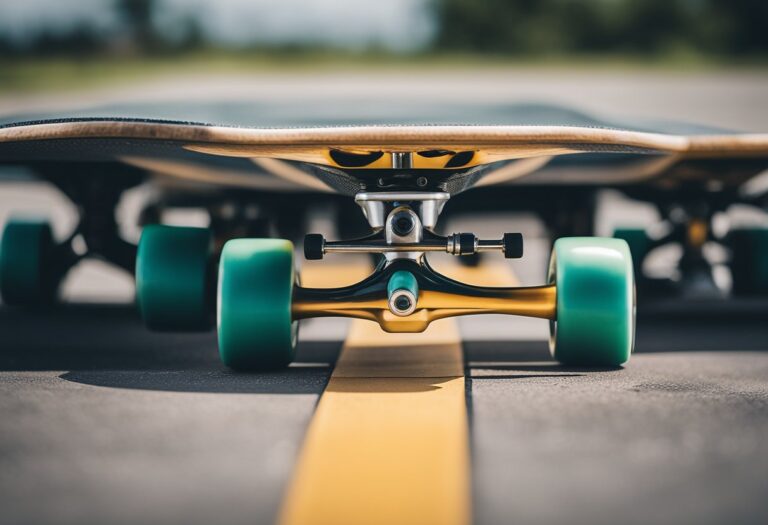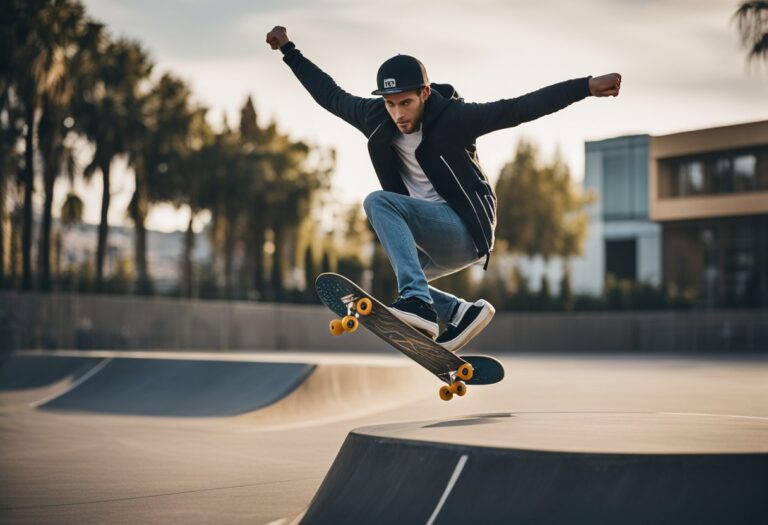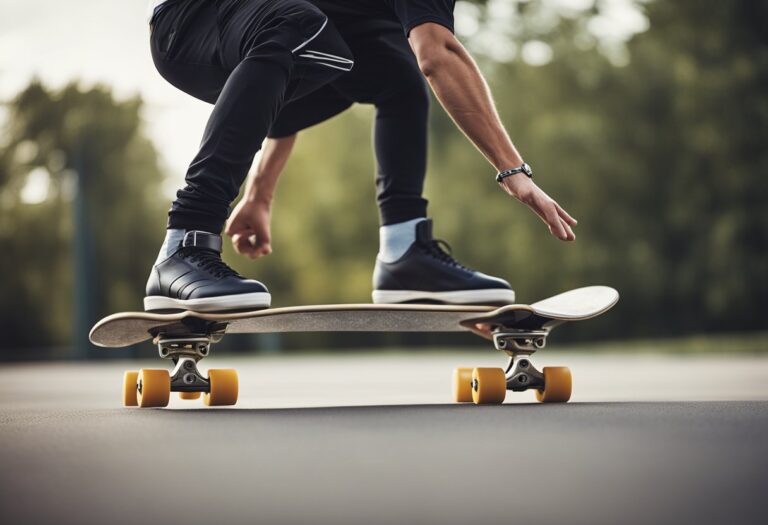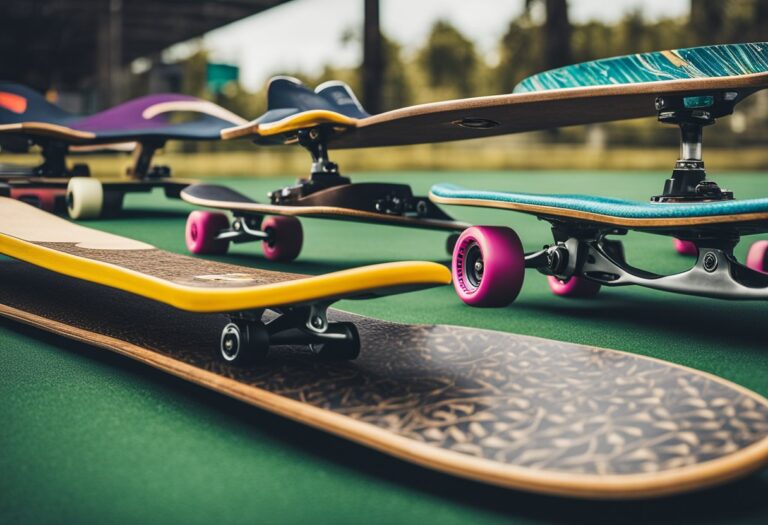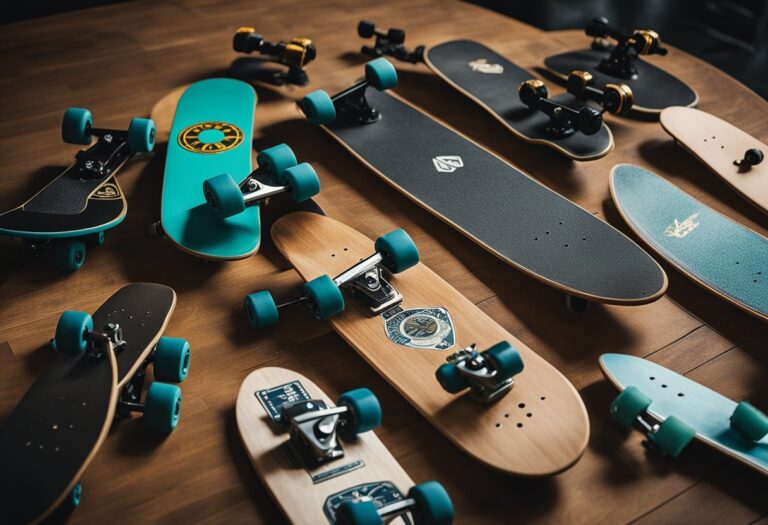Beginner’s Guide: Styles and Techniques in Skateboarding
Skateboarding is a thrilling and exciting sport that has gained popularity over the years. As a beginner, it can be overwhelming to navigate through the different styles and techniques involved in skateboarding. However, with the right information and guidance, anyone can learn how to skateboard and have fun while doing it.

Before diving into the different styles and techniques, it is essential to understand the basics of skateboarding. This includes understanding the different parts of a skateboard, how to stand on the board, and how to push and stop. Safety and gear are also crucial aspects that beginners need to be aware of before hitting the streets or skatepark.
Once the basics are covered, beginners can start learning fundamental techniques such as ollies, kickflips, and grinds. These techniques form the foundation for more advanced tricks and styles. Skatepark etiquette is also important to keep in mind when skating with others. With practice and patience, beginners can progress and improve their skills.
Key Takeaways
- Understanding the basics of skateboarding is crucial for beginners.
- Safety and gear are important aspects to consider before starting to skate.
- Learning fundamental techniques and skatepark etiquette can help beginners progress and improve their skills.
Skateboarding Basics

Choosing the Right Skateboard
As a beginner, choosing the right skateboard is crucial. There are several factors to consider when selecting a skateboard, including the size, shape, and material of the board.
The size of the skateboard should be based on the rider’s height and shoe size. A general rule of thumb is that the board should be as wide as the rider’s foot. The shape of the skateboard also plays a role in its performance. A wider board with a larger tail and nose is better for performing tricks, while a narrower board is better for cruising.
The material of the skateboard can also affect its performance. Most skateboards are made of wood, but there are also boards made of plastic or metal. Wooden boards are the most common and are suitable for beginners.
Understanding Skateboard Anatomy
To become a successful skateboarder, it is essential to understand the anatomy of a skateboard. The main components of a skateboard are the deck, trucks, wheels, and bearings.
The deck is the flat board that the rider stands on. It is made of layers of wood and comes in various sizes and shapes. The trucks are the metal parts that attach the wheels to the deck. They allow the rider to turn and maneuver the board.
The wheels are made of polyurethane and come in various sizes and hardness levels. Larger wheels are better for cruising, while smaller wheels are better for performing tricks. The bearings are the metal components that allow the wheels to spin. They come in different grades, with higher grades providing smoother and faster rides.
By understanding the basics of skateboard anatomy and choosing the right board, beginners can start their skateboarding journey with confidence.
Safety and Gear

Wearing Protective Equipment
Skateboarding is a thrilling sport, but it can be dangerous without proper safety gear. As a beginner, it is crucial to wear the right protective equipment to prevent injuries. The following are some of the essential protective gear to wear when skateboarding:
- Helmet: A helmet is the most important piece of protective gear. It protects the head from injuries during falls or collisions.
- Elbow and Knee Pads: These protect the elbows and knees from scrapes, cuts, and bruises.
- Wrist Guards: They protect the wrists from fractures and sprains.
It is important to ensure that the protective gear fits well and is comfortable to wear. Loose or ill-fitting gear can interfere with movement and cause discomfort, making it difficult to concentrate on skateboarding.
Falling Techniques
Falling is a normal part of skateboarding, and it is essential to learn how to fall properly to avoid injuries. Here are some techniques to help minimize the risk of injuries when falling:
- Roll with the fall: When falling, try to roll with the fall to distribute the impact across the body.
- Protect the head: Tuck the chin into the chest to avoid hitting the head on the ground.
- Use the protective gear: The protective gear will help absorb the impact of the fall and minimize injuries.
As a beginner, it is important to practice falling techniques on a soft surface before attempting them on a skateboard. This will help build confidence and minimize the risk of injuries.
Fundamental Techniques

Skateboarding is a sport that requires a great deal of practice and patience to master. There are several fundamental techniques that every beginner should learn before moving on to more advanced skills. These techniques include pushing and stopping, turning and carving, and basic tricks.
Pushing and Stopping
Pushing and stopping are the most basic skateboarding techniques. Pushing involves using one foot to propel the skateboard forward, while the other foot remains on the board. To stop, the rider can either drag their back foot on the ground or use the tail of the skateboard to come to a halt.
Turning and Carving
Turning and carving are essential techniques for maneuvering the skateboard. Turning involves shifting the weight of the body to one side, causing the skateboard to turn in that direction. Carving is a more advanced technique that involves making smooth, flowing turns by leaning into the turn and using the edges of the skateboard.
Basic Tricks
Once the fundamental techniques have been mastered, beginners can move on to learning basic tricks. These include ollies, kickflips, and heelflips. Ollies involve jumping with the skateboard, while kickflips and heelflips involve flipping the board with the feet.
By mastering these fundamental techniques, beginners can build a strong foundation for their skateboarding skills and progress to more advanced tricks and maneuvers.
Skatepark Etiquette

Navigating the Skatepark
Skateparks can be intimidating for beginners, but following some basic etiquette can make it easier to navigate. It is important to pay attention to other skaters and wait your turn to use obstacles. When waiting, stand off to the side to avoid blocking the flow of traffic. Before dropping in, take a few moments to observe the other skaters and their lines. This can help prevent collisions and ensure a smooth session for everyone.
Respecting Other Skaters
Respect is key to a positive skatepark experience. Always be aware of your surroundings and avoid cutting in front of other skaters. If you accidentally get in someone’s way, apologize and move out of the way as quickly as possible. It is also important to avoid hogging obstacles or staying on them for too long. Sharing is a fundamental part of skateboarding, and everyone deserves a chance to use the park.
Overall, following these basic guidelines can help beginners feel more comfortable in a skatepark and create a positive environment for everyone. Remember to always be respectful and aware of your surroundings, and don’t be afraid to ask for help or advice from more experienced skaters.
Maintenance and Care

Cleaning the Skateboard
As a beginner skateboarder, it is essential to keep your skateboard clean to ensure its longevity and optimal performance. Dirt and debris can accumulate on the deck, wheels, and bearings, leading to decreased speed and maneuverability.
To clean the skateboard, start by removing any loose debris with a brush or cloth. Then, use a mild soap and water solution to clean the deck, grip tape, and trucks. Avoid using harsh chemicals or abrasive materials that can damage the skateboard’s surface.
After cleaning, dry the skateboard thoroughly to prevent rusting and water damage. Regularly cleaning your skateboard will not only keep it looking good but also help it perform better and last longer.
Replacing Components
Skateboarding can be hard on the components of your skateboard, such as the wheels, bearings, and trucks. As a beginner, it is crucial to inspect your skateboard regularly and replace any damaged or worn-out parts.
Wheels can become flat-spotted or cracked, making them less effective for tricks and reducing speed. Bearings can become dirty or damaged, leading to decreased speed and performance. Trucks can become loose or worn, causing instability and decreased control.
Replacing components can be done at a skate shop or by oneself with the proper tools and knowledge. It is essential to choose high-quality parts that are compatible with your skateboard to ensure optimal performance and safety.
Regular maintenance and care of your skateboard will not only improve its performance but also increase its lifespan. By keeping your skateboard clean and replacing worn-out components, you can enjoy skateboarding to the fullest as a beginner.
Progression Tips

Practice Routines
As a beginner in skateboarding, it’s important to establish a consistent practice routine. This routine should include a variety of exercises that focus on different aspects of skateboarding. For instance, beginners should focus on learning the basics such as pushing, turning, and stopping. Once these skills are mastered, they can move on to more advanced techniques such as ollies and kickflips.
One effective practice routine for beginners is to spend 15-20 minutes each day practicing the basics. This should include pushing, turning, and stopping. Once these skills are mastered, they can move on to practicing ollies and kickflips. It’s important to remember that progress takes time, so don’t get discouraged if you don’t see immediate results.
Another effective practice routine is to practice with a friend. This can help motivate beginners and provide them with feedback on their technique. Additionally, practicing with a friend can make the learning process more enjoyable.
Overcoming Common Challenges
As with any new skill, there are common challenges that beginners may face when learning to skateboard. One of the most common challenges is fear. Fear can be a major obstacle for beginners, especially when attempting more advanced techniques such as ollies and kickflips.
To overcome fear, beginners should start by practicing on flat ground and gradually work their way up to more challenging terrain. It’s also important to wear proper safety gear such as a helmet and pads to reduce the risk of injury.
Another common challenge for beginners is frustration. Skateboarding can be a difficult skill to master, and it’s easy to become frustrated when progress is slow. To overcome frustration, beginners should focus on the process rather than the outcome. Celebrate small victories and don’t be too hard on yourself when mistakes are made.
By establishing a consistent practice routine and overcoming common challenges, beginners can progress quickly in the sport of skateboarding. Remember to be patient, stay motivated, and most importantly, have fun!
Frequently Asked Questions

What are the essential skateboard tricks for a beginner to learn first?
For a beginner, it is recommended to start with the basics such as riding and pushing. Once comfortable with those, a beginner can move on to learning the ollie, which is the foundation for many other tricks. Other essential tricks for beginners include the kickturn, frontside 180, and backside 180.
How does a beginner skater effectively learn to turn on a skateboard?
To turn on a skateboard, a beginner skater should start by shifting their weight to the direction they want to turn. It is important to keep the shoulders and hips aligned with the board and to use the toes and heels to control the turn. Practicing on flat ground and gradually increasing speed can help a beginner skater effectively learn to turn on a skateboard.
What are the recommended skateboards for beginners, both kids and adults?
For kids, a smaller skateboard with a width of 7.5-8 inches is recommended, while adults can start with a wider board of 8-8.5 inches. It is also important to choose a skateboard with quality trucks, wheels, and bearings. Some popular brands for beginner skateboards include Element, Santa Cruz, and Powell Peralta.
What are the key safety tips for a beginner starting out in skateboarding?
Wearing a helmet, knee pads, elbow pads, and wrist guards is essential for beginner skaters. It is also important to skate in safe areas such as skate parks or designated skateboarding areas, and to avoid skating in crowded or busy areas. Practicing within one’s skill level and avoiding attempting tricks beyond one’s ability can also help prevent injuries.
How can a beginner skater develop their balance and coordination on a skateboard?
Practicing riding and pushing on a skateboard can help a beginner skater develop their balance and coordination. Other exercises such as standing on one foot and shifting weight from side to side can also help. It is important to start with small movements and gradually increase difficulty to avoid injury.
What are the initial steps a beginner should take to practice skateboarding safely and effectively?
A beginner should start by choosing the right skateboard and safety gear, and finding a safe and appropriate place to practice. Practicing basic skills such as riding, pushing, and turning can help build a foundation for more advanced tricks. It is also important to practice regularly and to seek guidance from more experienced skaters or coaches.
